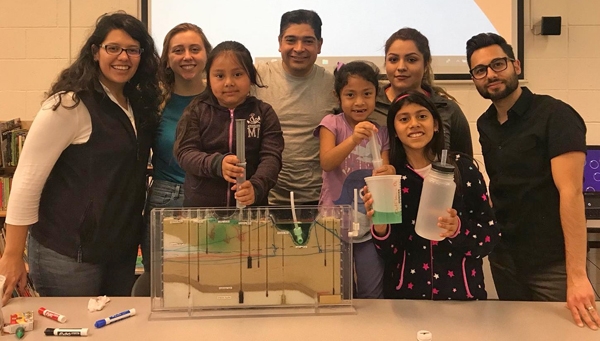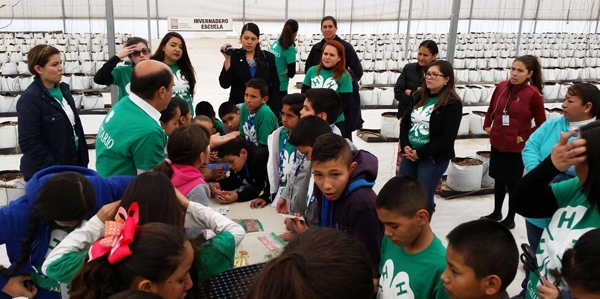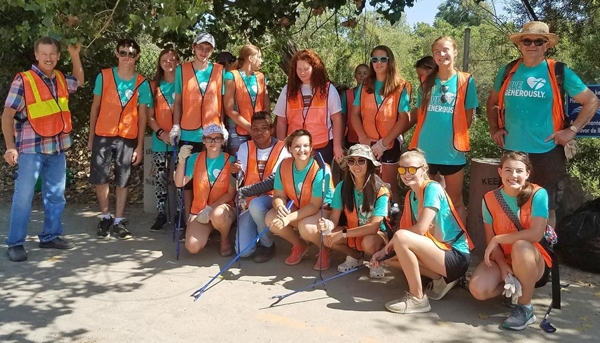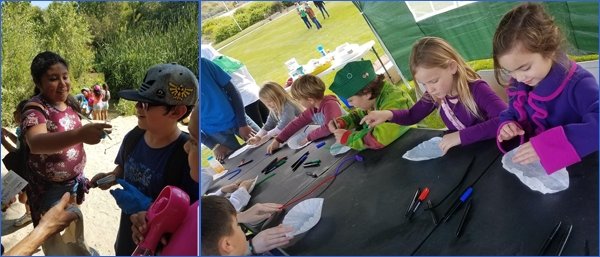
Claudia Diaz Carrasco is a 4-H youth development advisor with UC Cooperative Extension in Riverside and San Bernardino counties who has expertise in developing water programs for diverse youth communities.
Can you tell us a little about yourself and your work as a 4-H advisor?
I was hired five years ago and, at the time, it was one of the few positions I saw focused on underserved communities. I'm originally from Mexico and becoming a 4-H youth development advisor gave me the opportunity to give back to my community by working with other 4-H professionals and the community itself to diversify the program locally. We are, for example, looking at how we can engage communities that might not know about 4-H but could benefit from the framework we use for developing leadership skills and life skills. In the counties that I serve – Riverside and San Bernardino – we're exploring how we can use this model for communities newly integrating into the U.S. These counties are a bit misunderstood because while we are close to Los Angeles, much of the area has traditionally been and continues to be rural. 4-H has had a strong presence here for a long time, but we've been working recently to extend the program to underserved youth. I have the privilege of being at the forefront in diversity, equity, and inclusion efforts with an organization that understands and provides space to explore and lead in those areas.

Can you tell us a little bit more about what 4-H is and how the program looks in Riverside and San Bernardino counties?
4-H is a national organization – in fact, it is international – and it looks different in every state and abroad. But the main goal is to use project-based learning to foster life skills and leadership development. In California, that traditionally looks like a community club, which could be as small as five kids from three different families that get together once a month to do projects they are interested in, whether it's raising farm animals or starting a community garden. Some kids like LEGO building, others are drawn to kitchen science or canning. They might be trained by their parents who are volunteering, or by advisors like me from the university that train community volunteers or staff from other institutions, and those adults meet with the kids on a regular basis. A lot of my work in 4-H has been about engaging diverse, underrepresented youth. When I started, I saw a challenge for parents who have two jobs or work evenings and therefore don't always have the capacity to do after school activities, which limits who can participate in 4-H. Unfortunately, we don't have the budget to hire personnel to deliver the program in the community. But, we do have the recognition of the university and that opens doors so we can meet people where they are. We're now making progress on having projects defined by communities rather than a set curriculum.

You developed a water-based youth program. Can you tell us how that program came to be and what it involves?
I stumbled into water. I had a small grant with the National Parks that was blending culture and environmental education. As part of the project, we visited historical and cultural markers along the Santa Ana River – the biggest watershed in southern California – where we also saw a lot of water pollution and invasive species. Immediately the kids were like, what can we do about this? We started coming up with service projects, and that caught the attention of the Disney Conservation Fund, which supported a project specifically about water. We began by working with high school students who were already passionate about the river, then they engaged younger kids in conservation as part of a team teaching model. We try to take the kids on a field trip when we have the funds, because that's a big part of what motivates the teenagers and it's life changing for the younger kids – we made a video to show how excited the kids are outside. That's the beauty of working with youth – this was not a project that I dreamt up from my office, it was really driven by their interests.
You have spoken about the importance of having culturally appropriate youth programming. What advice might you have for others?
I start by saying one size doesn't fit all. We tend to use cookie cutter approaches because they can easily be repeated. I instead ask people if they are sure they want to do culturally appropriate programming because not all organizations are ready for that work and can make things harder for themselves and communities. That's not a reflection of whether an organization or given researcher is good or bad, it's about the effort it takes. If they are ready, I begin by teaching what culture is – there are many ways to think about it, but the shortest definition is that culture is who we are. There are things that we see like food, skin color, parties, and music. And there are things that we don't see like values and beliefs. You have to get to know the culture – shop in the same places as the community, attend events there, just to get a feel of what community members experience day to day! We have to be responsive to what is happening locally and recognize when we are not part of the culture. I'm a Latina, I grew up in Mexico, so I've experienced both Mexican and Mexican American culture, but it's not the same as people who were born here. I often need a cultural broker, someone who has the trust of a community and can be a bridge. For example, people often think if we just translate information, that makes it culturally appropriate, but you have to go beyond translation to actual engagement. Develop with the community versus for them, that's the change in mentality it takes.
What is your favorite part of the work you do with youth on water issues?
I think it's the direct connection with the culture of science. For me, it's both a personal and a professional journey. I'm a scientist, an engineer, and I was trained to be a linear thinker, teaching was just point A to point B. But then I started working with social scientists and interviewing people in the community and I had to change how I thought. Youth programming tends to emphasize the model of short, middle, and long term outcomes related to knowledge gains and changes in beliefs and behaviors. But from my own upbringing, for example, I already had a good attitude about taking care of the environment, the belief that things like not letting the water run too long mattered. All it took for me to change my behavior even more was to spend six or eight hours cleaning the river with the kids and now I see every single drop of water as precious. I wish every Californian could afford this type of experience. I think organizations need to recognize that “affordable” includes not only no fees for access, but also transportation services, and even just having free time. Sometimes our communities don't have that luxury, and recognizing that is a great place to start!
